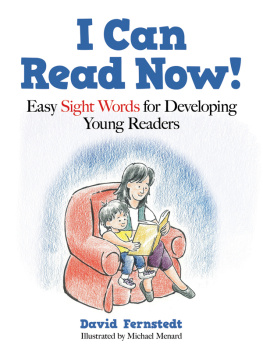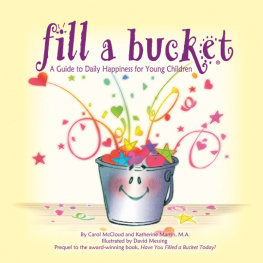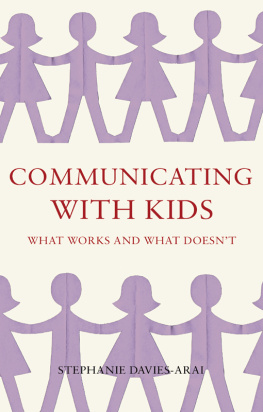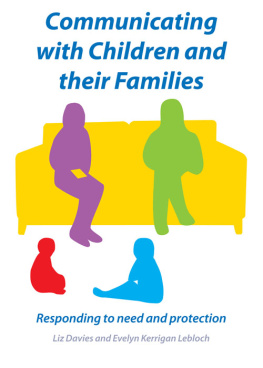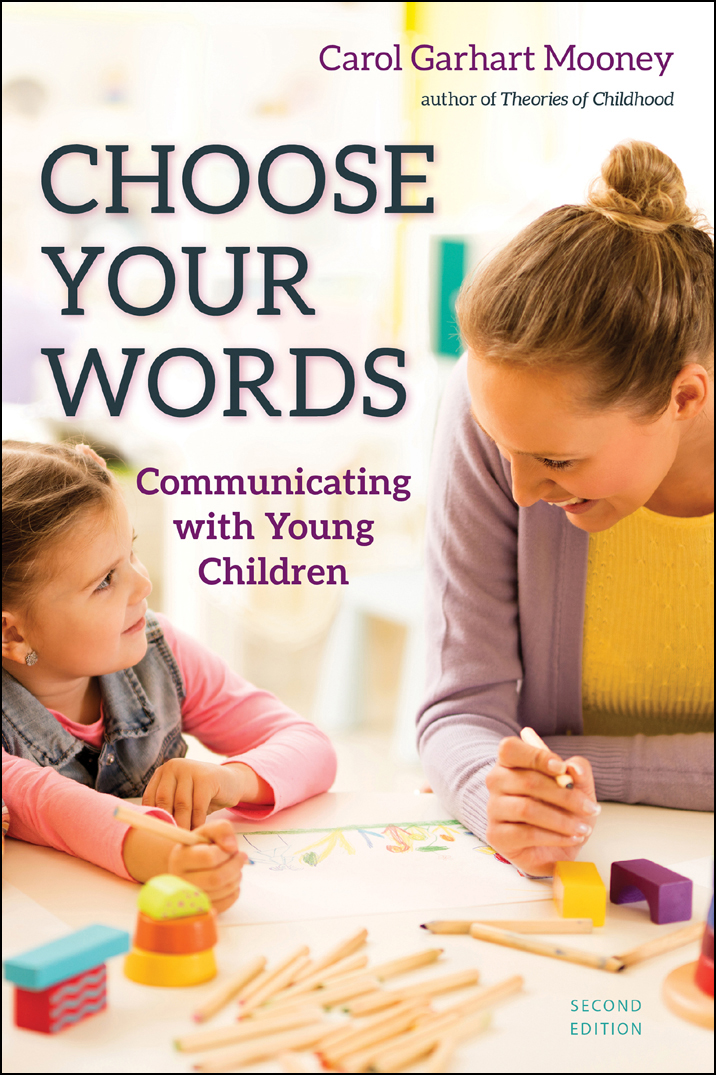
Published by Redleaf Press
10 Yorkton Court
St. Paul, MN 55117
www.redleafpress.org
2005, 2018 by Carol Garhart Mooney
All rights reserved. Unless otherwise noted on a specific page, no portion of this publication may be reproduced or transmitted in any form or by any means, electronic or mechanical, including photocopying, recording, or capturing on any information storage and retrieval system, without permission in writing from the publisher, except by a reviewer, who may quote brief passages in a critical article or review to be printed in a magazine or newspaper, or electronically transmitted on radio, television, or the Internet.
Second edition 2018. The first edition of this work was titled Use Your Words: How Teacher Talk Helps Children Learn.
Cover design by Louise OFarrell
Cover photograph by skynesher/iStock
Interior design by Jim Handrigan and Douglas Schmitz
Typeset in Chaparral Pro
Library of Congress Cataloging-in-Publication Data
Names: Mooney, Carol Garhart, author.
Title: Choose your words: communicating with young children / Carol Garhart Mooney.
Other titles: Use your words
Description: Second Edition. | St. Paul, Minnesota: Redleaf Press, [2018] | The first edition of this work was titled Use Your Words: How Teacher Talk Helps. | Includes bibliographical references.
Identifiers: LCCN 2017050847 (print) | LCCN 2018001869 (ebook) | ISBN 9781605545271 (ebook)
Subjects: LCSH: Teacher-student relationships. | Interaction analysis in education. | Communication in education. | Oral communication.
Classification: LCC LB1033 (ebook) | LCC LB1033 .M59 2018 (print) | DDC 371.102/3--dc23
LC record available at https://lccn.loc.gov/2017050847

This book is dedicated with love and admiration to the memory of Jay Munson (19382005), teacher, mentor, and dear friend. It was Jay who taught me to choose my words more carefully!

Contents
Table of Contents
Guide
SO MANY PEOPLE CONTRIBUTE to the successful publication of a book. My thanks and appreciation go first to the professionals at Redleaf Press. Their knowledge, support, and encouragement are present in every text I have published. This book, however, came to make sense and pull together through the outstanding skill and attitude of my editor, Cathy Broberg. Without her patience, ideas, and encouragement, it would not have gone to press. My inspiration comes from the teachers who routinely share their classrooms and ideas with me, as well as the children in those rooms who tell me their stories. I thank all of the young parents who have shared their ideas about parenting in the twenty-first century.
I am fortunate to have a few friends who year after year support my work. Thank you, Sara, Patrice, Joanne, Karen, Susan, Tessa, Wendy, Cindy, and recently but steadfastly, Mary Ellen and Laura.
Finally, but not at all last, I thank Marc, my husband, best friend, and outstanding administrative assistant. My children, Sean and Johann, Brian, Tom and Angie, and Erin and Gene, have always given love and support and much to think about. My granddaughters, Megan and Caitlin, have given me the opportunity to view development in the twenty-first centuryand my grandson, Liam, brings energy, delight, and enthusiasm to my life while forcing me to keep my eyes on change and the future.
MORE THAN A DECADE AGO, I wrote a small book for early educators and child care providers. It was called Use Your Words: How Teacher Talk Helps Children Learn. The book was to be a brief reminder to teachers to think about the way they use words with young children. Early on, I made the point that children look to us to be meaning makers. I continue to passionately believe that fact.
In 2018, however, I dont think it is such a simple topic to cover in a small volume. I originally started the first edition after a week when I visited several child care centers and at every single one, adults walked through the space saying, Use your words, use your words, use your words.... It didnt matter whether a child was crying because he couldnt finish his puzzle, whether she wanted to play and a friend said no, whether someone had just run into her block structure, or whether a parent had slipped out without saying goodbye. The universal response to children shouting, crying, or wailing seemed to be I cant help you when you do thatuse your words. I was impressed by the tiny girl whose answer was Whats my words? Those of you who were in classrooms ten years ago will remember the trend. Parents and teachers both overused the phrase to a sickening extent. It was a good idea that went awry or was poorly implemented or both.
The kind of challenges I see with children and words and grownups might best be introduced through a story. It remains a good way to make a point. I consistently used family and classroom stories in the first edition and will with this edition as well.
At a recent family gathering, my son used the expression You dropped your sneeze to his young son who had a bad cold and needed to sneeze but didnt. My grandson immediately leaned over both sides of the tray of his high chair looking for his sneeze, which is what he would do if he dropped his spoon or his strawberry! My teenaged granddaughters and several others thought this was hysterical. They laughed and laughed. My grandson just looked confused. Im sure he was. The nature of the confusion will not generate trauma, Im pretty sure. But continually to be in a state of confusion when adults dont communicate clearly can certainly impede both emotional and social growth. Exposure to a variety of media, changes to the formal use of the English language, and the addition of many new neighbors from around the world make this issue of words and meaning even more important than ever. And it has always been pretty important!
I could not imagine fifteen years ago the daunting task that revising this book seems to me today. We made jokes at Redleaf that we should schedule Choose Your Words 3 in a few years, as the newness of all the factors affecting little ones and language are increasing so rapidly that most of us cannot keep up. It is for this reason that Choose Your Words offers an additional chapter on contemporary challenges.
Returning to the complexity of children, words, and meaning, after the dropped sneeze incident I found myself asking my daughter-in-law more questions about their experience with language and their toddler. I wondered, for example, if they referred to the woodstove as hot even if there was no fire lit. After all, how do we adequately, to the best of our ability, make meaning of the world to all of the children in our care? Situations are always changing. How do you explain that hot changes and that knowing that is really important to a toddler? Why is playing ball in the yard okay but not in the street? How do we explain to small children which contexts allow for shouting and which dont?
Comedians have poked fun at our use of words for decades. My family is full of big fans of comedy and love lines like Why do they call it a driveway when people park there? and Why do they call it a parkway when people drive there? English is not an easily understood language. It has changed dramatically in the past twenty years for a variety of complex reasons. It is hard to untangle the great variety and yet very different causative factors that make using words with children more difficult than it has ever been.


